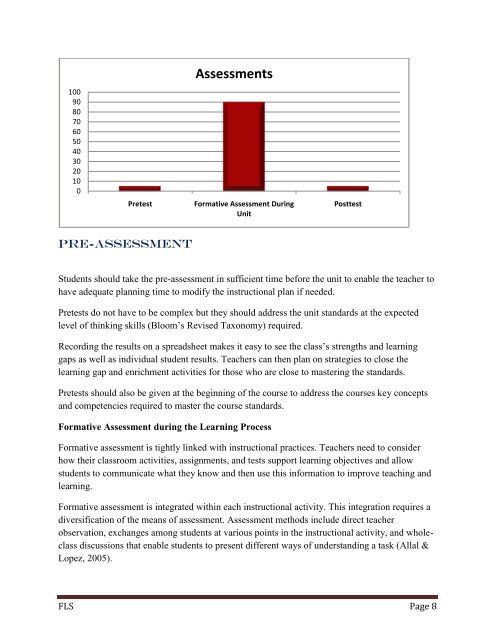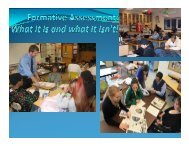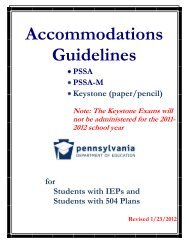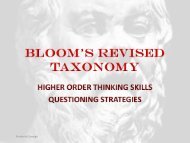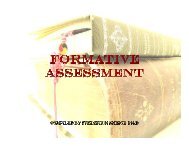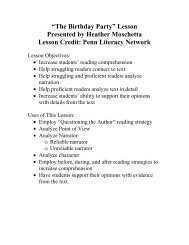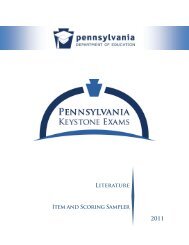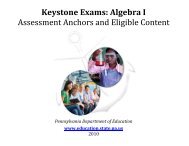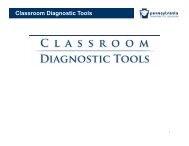FORMATIVE ASSESSMENT (Assessment for learning)
FORMATIVE ASSESSMENT (Assessment for learning)
FORMATIVE ASSESSMENT (Assessment for learning)
You also want an ePaper? Increase the reach of your titles
YUMPU automatically turns print PDFs into web optimized ePapers that Google loves.
100<br />
90<br />
80<br />
70<br />
60<br />
50<br />
40<br />
30<br />
20<br />
10<br />
0<br />
Pretest<br />
<strong>Assessment</strong>s<br />
Formative <strong>Assessment</strong> During<br />
Unit<br />
Posttest<br />
PRE-<strong>ASSESSMENT</strong><br />
Students should take the pre-assessment in sufficient time be<strong>for</strong>e the unit to enable the teacher to<br />
have adequate planning time to modify the instructional plan if needed.<br />
Pretests do not have to be complex but they should address the unit standards at the expected<br />
level of thinking skills (Bloom’s Revised Taxonomy) required.<br />
Recording the results on a spreadsheet makes it easy to see the class’s strengths and <strong>learning</strong><br />
gaps as well as individual student results. Teachers can then plan on strategies to close the<br />
<strong>learning</strong> gap and enrichment activities <strong>for</strong> those who are close to mastering the standards.<br />
Pretests should also be given at the beginning of the course to address the courses key concepts<br />
and competencies required to master the course standards.<br />
Formative <strong>Assessment</strong> during the Learning Process<br />
Formative assessment is tightly linked with instructional practices. Teachers need to consider<br />
how their classroom activities, assignments, and tests support <strong>learning</strong> objectives and allow<br />
students to communicate what they know and then use this in<strong>for</strong>mation to improve teaching and<br />
<strong>learning</strong>.<br />
Formative assessment is integrated within each instructional activity. This integration requires a<br />
diversification of the means of assessment. <strong>Assessment</strong> methods include direct teacher<br />
observation, exchanges among students at various points in the instructional activity, and wholeclass<br />
discussions that enable students to present different ways of understanding a task (Allal &<br />
Lopez, 2005).<br />
FLS Page 8


